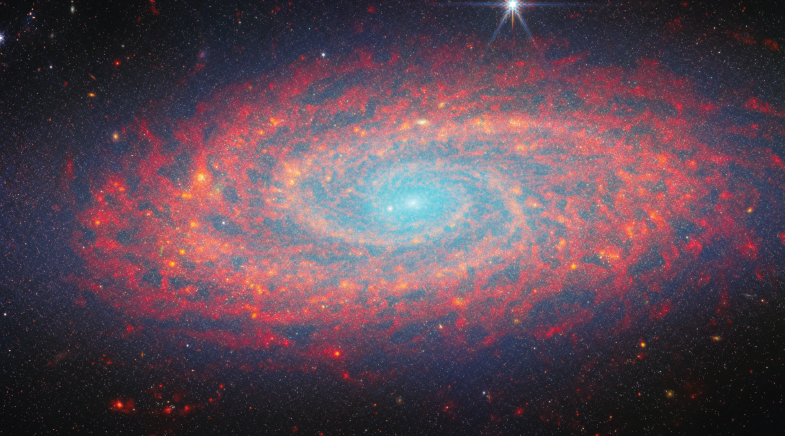The cosmic quest
-
- from Shaastra :: vol 03 issue 06 :: Jul 2024

Over the next decade, scientists will peer at over 50 million galaxies to find answers to deep questions about the universe.
The scope of Shaastra magazine is partly determined by the mandate of its parent organisation. IIT Madras is an educational and research institution focusing on engineering and technology. Similarly, Shaastra focuses on research in applied disciplines and its translation into economic value. However, despite the domination of engineering on its campus, IIT Madras also has large groups working on many aspects of fundamental science with no apparent, immediate practical applications. Likewise, Shaastra also reports frequently on research that tries to answer basic questions about life and the universe.
Space research isn't unlike any other field of scientific research. It creates knowledge as well as economic value.
This month's Cover Story is one such. As a field of research, cosmology seems far away from daily life. How do we use our knowledge about the Big Bang, the structure of the universe, its speed of expansion, properties of black holes billions of light years away, or the fate of the cosmos? We often defend such research by saying that they are fundamental questions of human existence. By extension, it can be argued, it is important for a science and technology magazine to pass on such knowledge to its readers. This is often an oversimplification.
ECONOMIC VALUE
Unbeknownst to the lay public, space research creates enormous economic benefits over time. Research in astrophysics and cosmology requires the development of precision equipment that pushes the boundaries of engineering. For example, the Laser Interferometer Gravitational-Wave Observatory (LIGO), which in 2015 detected gravitational waves from the merging of two black holes, was the most precise ruler ever made. Ground and space telescopes push the boundaries of optics, control systems, data analysis, materials science, and so on. The knowledge and skill created by space programmes slowly come down to industry and create enormous economic value.
Nations and the global scientific community invest in space mainly to answer fundamental questions of the universe, but they also know full well that such research does have economic value. One aim reinforces the other, and therefore it isn't always necessary to defend the building of an expensive observatory. Space research isn't unlike any other field of scientific research. It creates knowledge as well as economic value. When selecting stories for publication, Shaastra journalists are always mindful of this fact.
Our Cover Story is on how cosmologists are debating a mathematical model that describes how the universe evolved from its apparently hot beginnings, the forces that are driving its evolution now, and where it will all end up in the far future. It is a story that began more than one hundred years ago, with Einstein's general theory of relativity and is continuing well into the 21st century. Like all good stories, it has a good beginning, colourful characters, interesting plot twists, and healthy conflict. On the other hand, it is also a prologue to another story, of how scientists are trying to gather evidence and test contentious parts of the standard cosmological model.
Over the next five years, telescopes on the ground and in space will look at the universe in unprecedented depth and breadth. They will look at the early universe in detail, search for the hypothesised dark matter, try to measure the force – dark energy – that drives the expansion of the universe, and calculate this expansion rate with precision. Over the next decade, there are missions – including some from India – that will try to look at the universe even earlier than 400 million years after its birth, for which hard data are not available, using techniques that have not yet been developed. Shubashree Desikan's Cover Story captures some of the motivations that drive scientists to probe so deeply into the universe.
Cosmologists believe that they are living in a golden era for their field of research. For a long time after the birth of the field, theory ran well ahead of experiment. This was because human beings had not yet learned to gather precise data at scale about the current and past universe. During the next decade, scientists will look deeply at over 50 million galaxies, ranging from nearby ones to those born ten billion years ago. They expect this rich set of data to answer several fundamental questions about the universe. This will provide young students with an unimaginable opportunity to develop serious careers.
See also:
Have a
story idea?
Tell us.
Do you have a recent research paper or an idea for a science/technology-themed article that you'd like to tell us about?
GET IN TOUCH














